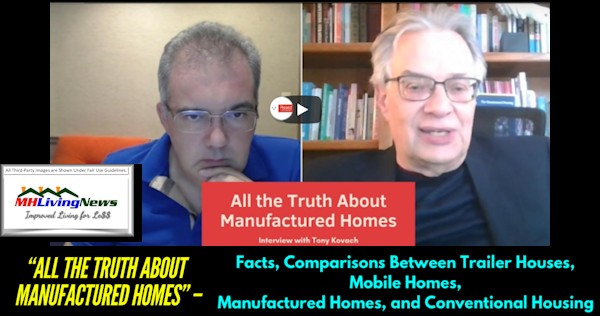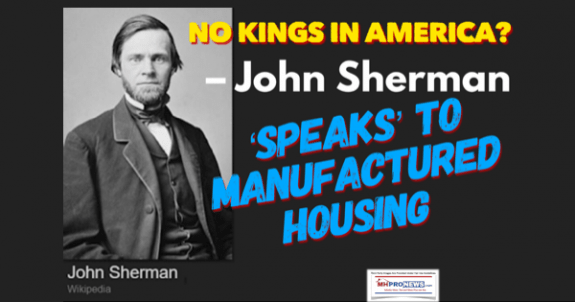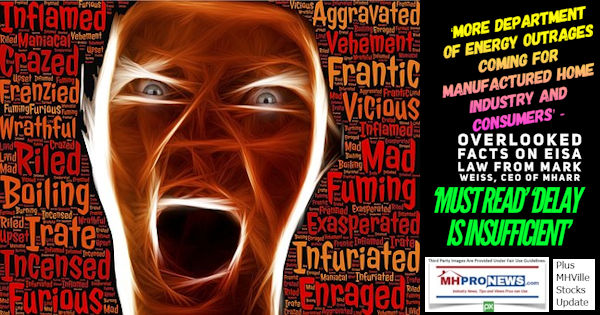
Going back to basics can be eye opening. The purpose of a trade association is described by left-leaning Wikipedia as follows: “One of the primary purposes of trade groups, particularly in the United States, is to attempt to influence public policy in a direction favorable to the group’s members. It can take the form of contributions to the campaigns of political candidates and parties through political action committees (PACs); contributions to “issue” campaigns not tied to a candidate or party; and lobbying legislators to support or oppose particular legislation. In addition, trade groups attempt to influence the activities of regulatory bodies.” That wiki also explained: “A trade association, also known as an industry trade group…is an organization founded and funded by businesses that operate in a specific industry. An industry trade association participates in public relations activities such as advertising, education, publishing, lobbying, and political donations, but its focus is collaboration between companies. Associations may offer other services, such as producing conferences, holding networking or charitable events, or offering classes or educational materials. Many associations are non-profit organizations governed by bylaws and directed by officers who are also members.” When someone grasps the facts, evidence and trends of the two national trade groups in manufactured housing – what they do and say, a fair question ought to be – how are each doing with respect to their purpose and mandate? Part II of this report will examine that question in the light of Manufactured Housing Institute’s (MHI) recent messaging as contrasted by this new “Issues and Perspectives” (IP) in Part I by Mark Weiss, J.D., President and CEO of the Manufactured Housing Association for Regulatory Reform (MHARR).
In reading this IP by MHARR’s Weiss, ask yourself. Have you read anything like this from an MHI leader? If not, why not?
- Part I – MHARR IP and Cover Memo
- Part II – Additional Information from MHI with More MHProNews Analysis and Commentary in Brief
With that outline, it is time for moving ahead. Note: hot links below are added by MHProNews to connect MHARR’s points with related evidence.
Part I
“More Department of Energy (DOE) Energy Outrages Coming for the Manufactured Home Industry and Consumers.”
APRIL 6, 2023
TO: HUD CODE MANUFACTURED HOUSING INDUSTRY MEMBERS
FROM: MHARR
RE: APRIL 2023 MHARR ISSUES AND PERSPECTIVES — A MUST READ
Attached hereto is the April 2023 edition of MHARR Issues and Perspectives (IP), entitled “More DOE Energy Outrages Coming for the Industry and Consumers.”
With recent activity by the U.S. Department of Energy (DOE) to delay the scheduled May 31, 2023 implementation date for the discriminatory and ultra-costly manufactured housing “energy conservation” standards adopted in 2022, many in the industry may be breathing a sigh of relief. They should not be.
While a delay may be tactically useful in certain respects given the pending litigation against the DOE rule, a delay in-and-of-itself does not and will not solve the much deeper industry-destructive problems posed by discriminatory DOE manufactured housing energy regulation under section 413 of the Energy Independence and Security Act of 2007 (EISA).
One such key problem for the future of the industry and the future availability of affordable manufactured housing for American consumers, is EISA’s mandate for “updates” to the DOE manufactured housing energy standards with each new iteration of the International Energy Conservation Code (IECC). And those updates will be directly impacted by the legitimacy or illegitimacy of the IECC code-development process – which is addressed, analyzed and deconstructed in the attached Issues and Perspectives article.
MHARR, therefore, urges all industry members to familiarize themselves with the IECC process as detailed in this IP, and to realize that the delay of the current DOE rule itself is far from sufficient and not a remedy for the industry and those who rely on the affordability of its homes. The IECC nexus is yet another reason why the DOE manufactured housing “energy conservation” rule must be stopped and must be “sent back to the drawing board.”
The current delay, then, is just the beginning of the battle to ensure that the manufactured housing industry – and the affordable housing that it provides for all Americans – is not sacrificed on the altar of energy special interests and climate extremism.
MHARR will continue to monitor all matters relevant to discriminatory and market-destructive DOE energy regulation and will advise the industry accordingly.
Manufactured Housing Association for Regulatory Reform (MHARR)
1331 Pennsylvania Ave N.W., Suite 512
Washington D.C. 20004
Phone: 202/783-4087
Fax: 202/783-4075
Email: MHARR@MHARRPUBLICATIONS.COM
Website: manufacturedhousingassociation.org
MHARR – ISSUES AND PERSPECTIVES
By Mark Weiss
APRIL 2023
“MORE DOE ENERGY OUTRAGES COMING FOR INDUSTRY AND CONSUMERS”
Notwithstanding industry legal action to oppose the excessive and discriminatory May 31, 2022 manufactured housing energy standards adopted by the U.S. Department of Energy (DOE) based on the 2021 version of the International Energy Conservation Code (IECC) and DOE’s subsequent steps to delay the scheduled May 31, 2023 implementation date for those standards, the industry cannot afford to lose sight of an even more serious problem that could lie ahead under section 413 of the Energy Independence and Security Act of 2007 (EISA). That “problem,” in a nutshell, is an ongoing, continuing and, potentially, never-ending threat of even more extreme standards and even greater regulatory compliance costs being imposed on the industry and its consumers with every new three-year “update” of the IECC. This threat, moreover, is amplified even further at a time when year-over-year (YOY) production of HUD Code manufactured homes, over nearly two quarters, has entered a phase of steep decline, with the severity of that decline progressively worsening over the entire period, reaching a YOY decline of nearly 30% in February 2023.
The looming danger, above and beyond the now ostensibly “delayed” 2022 DOE energy standards, which is not yet widely known or appreciated by many in the industry (or even more so by consumers), is arguably an outgrowth of documented “go-along-to-get-along” activity on DOE energy standards by the Manufactured Housing Institute (MHI). Since the enactment of EISA, virtually all industry attention has been focused on DOE’s development of the initial set of IECC-based energy standards. Freedom of Information Act (FOIA) documents and other materials obtained by MHARR show that MHI, until 2016, was involved in that DOE development process, including its vote to approve the standards “Term Sheet” developed pursuant to DOE’s sham “negotiated rulemaking” process.
If MHI had not been so focused on this cooperation with DOE over this period, it might have taken notice, early on, of DOE’s failure to substantively consult with both HUD and the Manufactured Housing Consensus Committee (MHCC) regarding manufactured housing energy standards – as required by law – ultimately leading (despite provably false DOE denials) to the destructive and discriminatory May 31, 2022 DOE final rule. It might also have taken notice of another provision of section 413, requiring that the DOE standards be updated with each new iteration of the IECC, and might have taken steps to ensure the proper representation of all segments of the industry and manufactured housing consumers on the IECC committee, rather than just Clayton Homes, Inc., the industry’s largest conglomerate. Or it might have addressed the unending “updating” issue in remedial legislation that it unveiled in 2022 and supposedly continues to pursue. None of that has occurred, however, leading to the dilemma that the industry and consumers face beyond the immediate threat posed by the May 31, 2022 DOE manufactured housing energy standards.
That dilemma stems directly from EISA section 413. Section 413 has two basic components. First, it shifts authority for the development of manufactured housing “energy conservation” standards from HUD to DOE. Second, it instructs DOE (subject to certain qualifications) to “base” its manufactured housing energy standards on “the most recent version of the International Energy Conservation Code….” And, when the IECC is revised, DOE is directed to “update” its manufactured housing energy standards “not later than … one year after” any such revision. Consequently, post-2021 revisions of the IECC will trigger a parallel “revision” process for the DOE manufactured housing energy standards. And the IECC is subject to a three-year updating cycle. As a result, the revision process for the 2024 IECC is underway now and it is highly likely, in the absence of prior judicial intervention, that the energy/climate zealots at DOE will use that update to tighten the screws on the industry and its consumers even further when the 2024 IECC is published (and every three years thereafter).
As a result, MHARR has been carefully monitoring and analyzing ongoing proceedings, under the auspices of the International Code Council (ICC), that will lead to the next iteration of the IECC in 2024. From that monitoring, it is evident that the 2024 IECC process is being dominated by climate extremists, placed on the development committee by ICC, which itself has simultaneously skewed the entire IECC process through biased policies and pronouncements. By structuring the IECC committee as it has and by “putting its thumb on the scale” of the new IECC development process from the start, ICC has undermined any semblance of credibility, legitimacy, or objectivity in the development of the IECC which, in turn, demonstrates yet again, that the IECC is not now – and never will be – an appropriate basis for manufactured housing energy standards, EISA section 413 notwithstanding.
And what will the 2024 IECC look like in comparison to the 2021 version? Well, that is not much in doubt after certain policy pronouncements by the ICC Board of Directors. At the outset, it is important to know that the entire process for the development of the 2024 IECC was changed by the ICC Board after credible allegations of abuse and manipulation in connection with the 2021 IECC.
In the March 2021 edition of MHARR Issues and Perspectives, entitled “The Ultimate Battle Against Destructive Energy Regulation,” MHARR wrote:
“[T]he 2021 IECC revision process saw multiple high-cost proposals that were previously rejected within IECC committees, reinstated and adopted, during the final government-official-only vote after a behind-the-scenes campaign by energy special interests to lobby and pressure those government officials to cast votes in favor of the previously-rejected proposals. An NAHB ally, Leading Builders of America (LBA), explained this “manipulation” of the IECC process in a January 26, 2021 letter…. To support these claims, LBA provided recordings of conference calls with special interest activists lobbying government official voters to follow a cheat-sheet “voting guide” showing the previously-rejected proposals the activists sought to have reinstated and adopted in the final vote. As a result of this “political manipulation,” the ICC Board of Directors … voted to convert the IECC from a government code process to an American National Standards Institute (ANSI)-based consensus process … with equally-balanced committees and voting.”
Further actions by the ICC Board, however, as explained below, are operating to ensure that the 2024 IECC, notwithstanding the procedural change to a supposed “consensus” process, will be even more excessive, outrageous and costly than the 2021 IECC which has only been adopted, to date, by five states.
First, the Board expressly adopted the 2021 IECC as the starting point for the 2024 IECC. By using the tainted 2021 code as the starting point for revisions, this decision effectively locks in place – for all time – the “manipulation” and “abuse” that the Board effectively conceded in changing to a “consensus standards” system. While thus acknowledging the validity of the claims of a fundamentally-tainted IECC 2021 process, the ICC Board’s decision leaves the results of that tainted process in place as a springboard to further contaminate future IECC revisions, starting with IECC 2024, which would build upon a fundamentally-tainted “foundation.” As a result, the 2024 IECC is – and beyond dispute will be – fatally contaminated and tainted as a derivative of the fundamentally-tainted 2021 IECC process.
Second, the ICC Board itself ensured that the 2024 IECC would not be the product of an objective, legitimate and un-manipulated “consensus” process by setting illegitimate policy parameters to ensure that future editions of the IECC would track the viewpoints and biases of the ICC Board. Not only did the Board declare that the 2024 could not and would not retreat from the excessive and excessively-costly dictates of the 2021 IECC, but further stated that the IECC should ensure a “pathway” to “net-zero energy buildings presently and by 2030.” In a 2021 publication on the change to an alleged “consensus” process, the ICC Board thus stated:
“The 2024 IECC will start from the content of the 2021 IECC … including an increase of efficiency requirements by about 40%, or an average of 8% a cycle from 2006 to 2021…. The scope and intent of the 2024 IECC and editions moving forward will be updated to meet the following commitments – The IECC will continue to be updated on a three-year cycle and each edition will increase energy efficiency over the prior edition.”
So much, then for objectivity and legitimacy, when revisions can progress in only one direction. This mandate thus ensures, in and of itself, that IECC committee members cannot and, indeed, must not even consider the relaxation of any existing standard, let alone exercise any type of legitimate discretion and independence with regard to any such proposal, contrary to American National Standards Institute (ANSI) consensus criteria.
Third, as a result of selection decisions made by ICC and the ICC Board, the IECC committee is dominated, in fact and in practice, by energy/climate extremists. It is evident from every IECC committee and subcommittee meeting monitored by MHARR, that the entire process is driven by energy/climate zealots who predominate and dominate proceedings in every observable respect. Thus, despite participation by the National Association of Home Builders (NAHB) and other alleged “builder” representatives (including a representative from Clayton Homes, Inc.), those representatives have offered virtually no public opposition to extreme and costly proposals, with one alleged “builder” representative noting that his particular company would be implementing those proposals “voluntarily” in any event. Notably, though, there is no direct representation on the committee for smaller HUD Code industry businesses or related individuals.
Meanwhile, members of the public who have opposed costly and unnecessary proposals in the first round of comments are routinely given short-shrift at committee and subcommittee meetings, prevented from providing full statements, or bypassed altogether. Those from outside the committee offering public comment proposals to either ameliorate or delete costly and burdensome measures are routinely voted-down with no legitimate consideration or debate whatsoever of their points or objections. Indeed, from what MHARR has observed, the “deliberations” of the IECC main committee and subcommittees appear to be scripted and agreed-to outside of any type of public record, public visibility or public accountability, and are as open to legitimate and meaningful debate as sessions of the North Korean Politburo.
All of this underscores once again that the IECC is not an acceptable base code or even starting point for affordable manufactured housing energy criteria and that EISA section 413 is an illegitimate abomination, resulting from an ugly legislative process, that now must be repealed regardless of the outcome of pending litigation. Put differently, mere “delay” of the pending DOE energy standards is not enough. The entire foundation of EISA section 413, and the standards and standards process mandated thereby, are rotten to the core and must be eliminated.
Mark Weiss
MHARR is a Washington, D.C.-based national trade association representing the views and interests of independent producers of federally-regulated manufactured housing.
“MHARR-Issues and Perspectives” is available for re-publication in full (i.e., without alteration or substantive modification) without further permission and with proper attribution. ##
Part II Additional Information with More MHProNews Analysis and Commentary
Note that substantive content of MHI’s most recent emailed newsletter is found at this link below. Look at the above. Then look at what MHI said.
Next, look at what this MHProNews fact check, analysis, and commentary provides industry readers vs. what MHVillage’s MHInsider column by Darren Krolewski did, linked below.
While Krolewski is attempting to portray his firm as a good marketing option, there is zero (no) mention from that ‘MHI endorsed’ operation that the manufactured housing industry is now in its 5th month of a downturn. If their readers (who are apparently only a small fraction of those found here, per sources deemed reliable, including MHVillage/MHInsider) were relying only on them for ‘industry news,’ how could they know of the current 5-month manufactured housing downturn when it isn’t mentioned?
With those comparison of information from each source in their own words, consider the following.
- 1) An MS Word search of MHARR’s IP on 4.6.2023 above MHI’s 4.3.2023 ‘Federated States’ emailed news updates (linked above) revealed the following.
Comparisons of Communications between MHI and MHARR
(during first full week of April 2023)
Note: Manufactured Housing Institute = MHI.
Manufactured Housing Association for Regulatory Reform = MHARR.
Comparison #1
MHARR April Issue and Perspective (4.6.2023)
“MORE DOE ENERGY OUTRAGES COMING FOR INDUSTRY AND CONSUMERS”


MHI Federated States ‘newsletter (4.3.2023)

On insights into Section 413 of the EISA the MS Word search MHARR’s IP on the DOE threat reveals 8 places where 413 (i.e.: section 413) of the EISA is used. The same MS Word Search of the MHI 4.3.2023 email reveals ZERO examples of 413 in their messaging.
Next, what about mention of the EISA itself?
Comparison #2
MHI Federated States ‘newsletter (4.3.2023)

MHARR April Issue and Perspective (4.6.2023)
“MORE DOE ENERGY OUTRAGES COMING FOR INDUSTRY AND CONSUMERS”

The results of comparison number 2 are MHI zero. MHARR 10. Which begs the question. How can MHI readers, which are amplified through their various state association ‘affiliates,’ be aware of the risks if they aren’t reading MHARR or MHProNews? Keep in mind what the duties of a trade group as defined by Wikipedia are. Further keep in mind that MHI has made specific claims to IRS in order to get and maintain their nonprofit status.
Comparison #3
MHI’s Federated States ‘newsletter’ of 4.3.2023 on mention of the IECC. Here, MHI has two results. More on that shortly.

To save space and time, on the MHARR April Issue and Perspective (4.6.2023) “MORE DOE ENERGY OUTRAGES COMING FOR INDUSTRY AND CONSUMERS” only the number of results is shown in the screen capture below.

MHI 2 vs. MHARR 50 (note: in both cover memo and IP article itself combined). What did MHI actually say? And what was the context for MHI’s mention of the IECC? Let’s look. The entire section of the MHI Federated States newsletter which mentions the IECC is found below. The IECC mention is near the end.
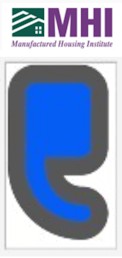
“DOE Offers States and Localities Funding to Adopt More Stringent Energy Codes
As the Administration continues to make climate change and energy efficiency top priorities, the DOE announced it will make $1 billion in funding available to help states and local governments create improved building codes that reduce carbon emissions and improve energy efficiency through the IRA Funded Technical Assistance for the Adoption of Building Energy Codes. The awards will support states and local jurisdictions in adopting, implementing, and enforcing the latest model, zero energy codes, or equivalent codes and standards, including the adoption of the 2021 International Energy Conservation Code (IECC) for residential buildings. Funds will also be awarded to adopt a building energy code that meets or exceeds the zero energy provisions in the 2021 IECC code. Learn more.”
MHI is oddly admitting that the DOE is making a billion dollars in funding available to make IECC standards tougher. Ironically, they are making MHARR’s point BUT without any obvious mention of the risk that MHARR has stressed that this means to the manufactured housing industry. This is tantamount to what a MHEC member previously told MHProNews; namely, that MHI is guilty of “association malpractice.”
MHARR keeps saying that the DOE Energy Rule could prove crushing for manufactured housing if it isn’t outright STOPPED. Killed. Eliminated. Oddly, again, a letter from Senator Tim Scott makes a less intense, but similar argument, and MHI is known to be aware of that letter.

Restated, MHI is apparently betraying the interests of all those in MHVille who want to see reasonable, rather than excessive and ongoing energy regulations. The size of the error (if it is an error) by MHI is difficult to understate. This appears to fit the definition of ‘sabotaging monopoly’ tactics that James A. “Jim” Schmitz of the Minneapolis Federal Reserve and Samuel “Sam” Strommen’s thesis that MHI is working with its three largest builders to throttle the rest of the industry’s independents.
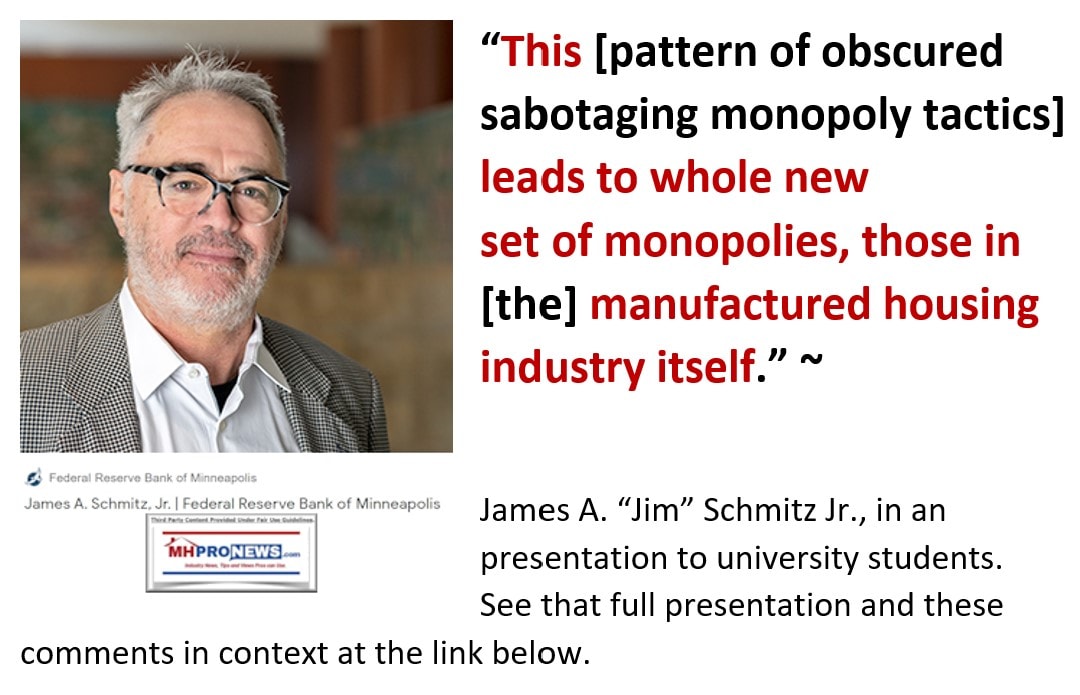
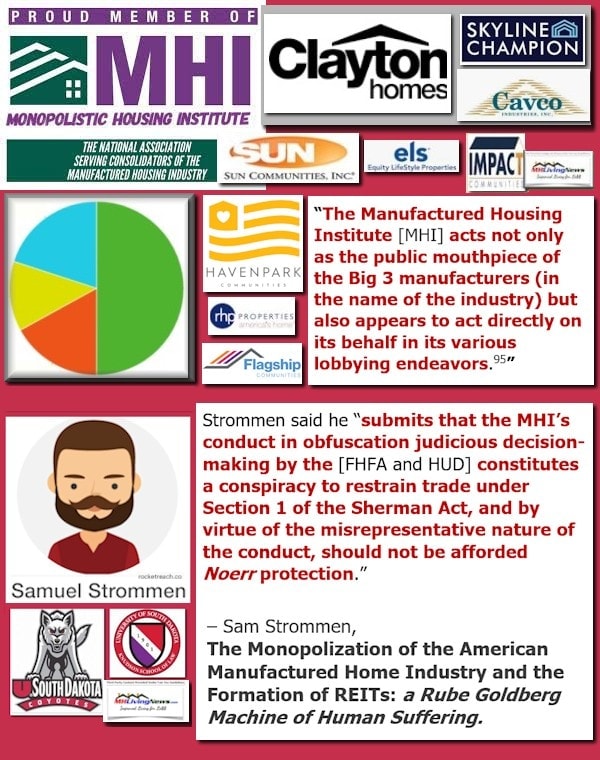
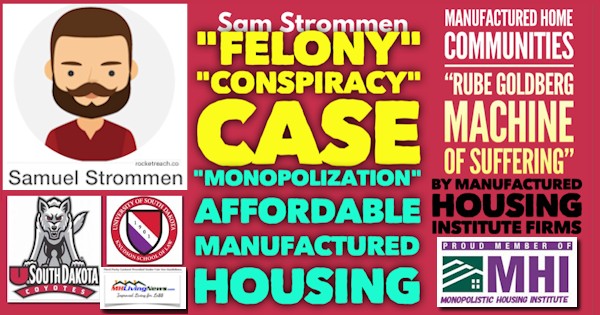
Keep in mind that MHI’s leader have been asked repeatedly, see an example below, about their response to such evidence based allegations. They have remained silent, as have their attorneys.
Related and Upcoming
There is a status conference next Tuesday in MHI-TMHA vs. DOE et al Case Number No. 23-cv-00174. MHProNews plans to report the outcome of that hearing. If MHI and the Texas Manufactured Housing Association (TMHA) attorneys fail to press for ALL of the industry’s rights under the law, instead of merely ‘delay’ – as MHI recently said – MHProNews will so report. If MHI-TMHA fails to press for killing this destructive rule, then they and their board members should individually and collectively be held to account in every lawful method available. The status conference order is linked here as a download. Note: per an informed source and FWIW, MHProNews is told that it is a Republican appointee that has taken up the re-assigned case.
Recall that just days ago, an MHI insider told MHProNews that the industry will ‘never’ recover to its prior highs. Apparently, the industry’s ‘leaders’ like the status quo – and are willing to accept the industry shrinking again.
MHI, TMHA, and their attorneys have an opportunity to do what’s right for the entire industry, or they can continue down the apparent path of behaving in a duplicitous fashion that benefits consolidators and site builders, but not all segments of the manufactured home industry. See the linked reports to learn more.
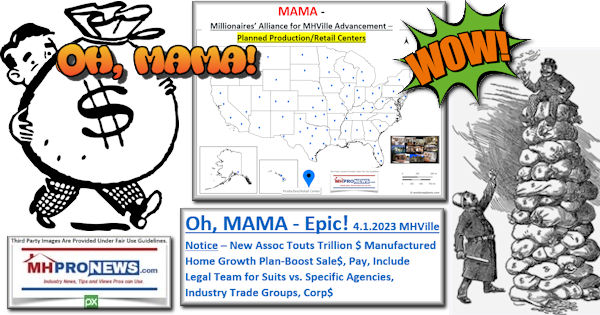
Keep in mind that Freddie Mac has made it plain that millions of new manufactured homes could be sold. But that is apparently not the goal of MHI and their leaders, at least, not at this time. For those who like or love this profession (at its best, not at its meh or worst), exposing the mendacity, paltering, duplicity and various shams might save this profession as a volume producer of affordable housing. This aspect of the American Dream is under assault from outside and within. Potentially criminal and civil liability may be in the future of certain MHI leaders, if they don’t pivot. Stay tuned for more. ##

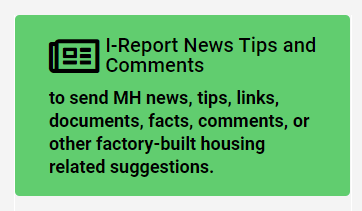
Again, our thanks to free email subscribers and all readers like you, as well as our tipsters/sources, sponsors and God for making and keeping us the runaway number one source for authentic “News through the lens of manufactured homes and factory-built housing” © where “We Provide, You Decide.” © ## (Affordable housing, manufactured homes, reports, fact-checks, analysis, and commentary. Third-party images or content are provided under fair use guidelines for media.) (See Related Reports, further below. Text/image boxes often are hot-linked to other reports that can be access by clicking on them.)

By L.A. “Tony” Kovach – for MHProNews.com.
Tony earned a journalism scholarship and earned numerous awards in history and in manufactured housing.
For example, he earned the prestigious Lottinville Award in history from the University of Oklahoma, where he studied history and business management. He’s a managing member and co-founder of LifeStyle Factory Homes, LLC, the parent company to MHProNews, and MHLivingNews.com.
This article reflects the LLC’s and/or the writer’s position, and may or may not reflect the views of sponsors or supporters.
Connect on LinkedIn: http://www.linkedin.com/in/latonykovach
Related References:
The text/image boxes below are linked to other reports, which can be accessed by clicking on them.’
